A Rochester Scholars photo gallery
Day Two: Fluid Dynamics
Engineers use fluid dynamics to design aerodynamic cars, to make sure aircraft can generate enough lift, to study the dispersion of air pollution, to design the most efficient, cost effective pipelines, and develop microfluidic labs on chips, Prof. Tenhaeff explained in his lecture. He discussed some of the key fluid properties -- density, viscosity, and pressure -- and the mathematical equations chemical engineers use to measure those properties. Student volunteers helped him demonstrate hydrostatics by suspending a tube between them as a simple manometer, with TenHaeff first putting in water, then adding oil. In another demonstration, water released from the lower part of a tall, upright cylinder shot out farther than water released from holes higher up, demonstrating the effect of pressure on fluid dynamics.
In the lab, students calculated flow rates of water draining from bottle aspirators through different sized tubes, both when the bottles are allowed to completely drain, and when they are kept continuously full. They also studied the effect of different pump speeds on fluid flow rates using a centrifugal pump connected to a U pipe. Various fittings and valves enabled them to observe resulting drops in fluid pressure.
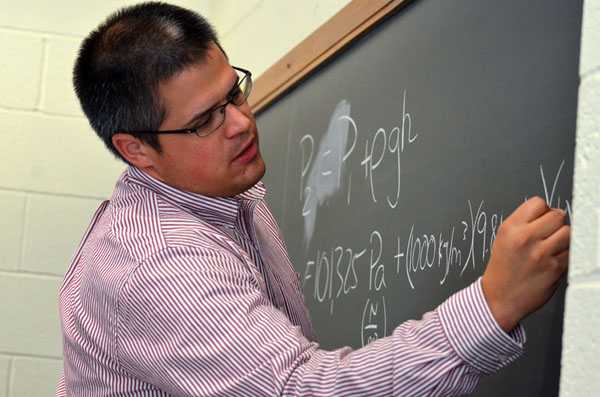
Calculus is integral to chemical engineering, and each lecture included an introduction to some of the basic laws and equations used in this field. As part of his lecture on fluid dynamics, Prof. Tenhaeff helped the students calculate the difference in pressure, as measured in pascals, that one would experience at the top of Mt. Everest, as opposed to the bottom of the Mariana Trench in the Pacific Ocean.
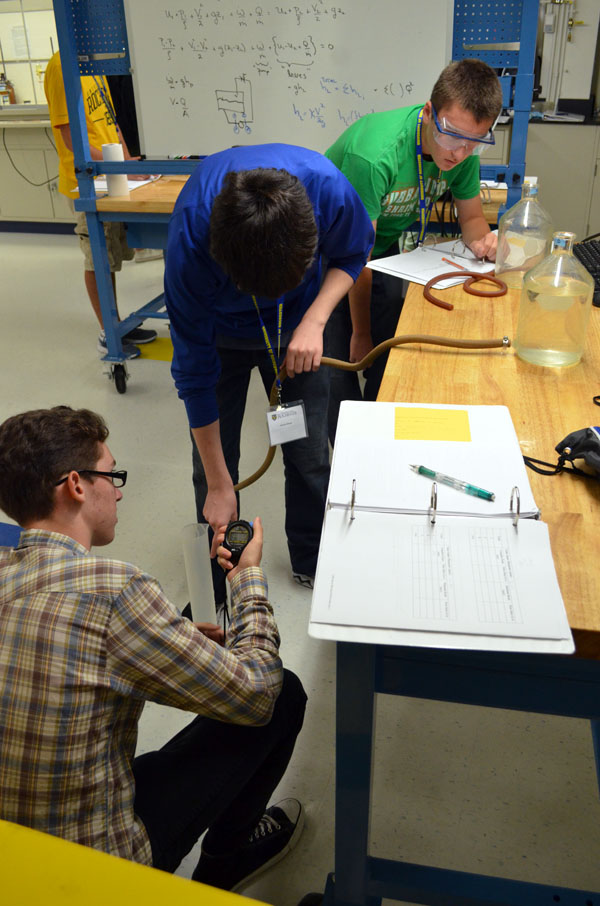
Luke J. times the flow of water draining from an aspirator bottle as Aaron G. keeps the tube positioned over a cylinder and Garrett H. prepares to record the results.
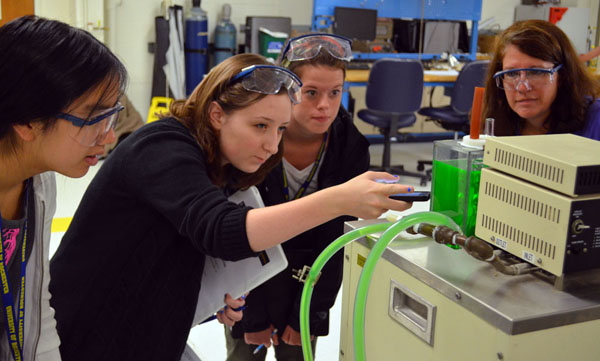
Rachel Monfredo demonstrates kinetic viscosity in a constant temperature bath to Samantha H., Taylor D. and Riley W..
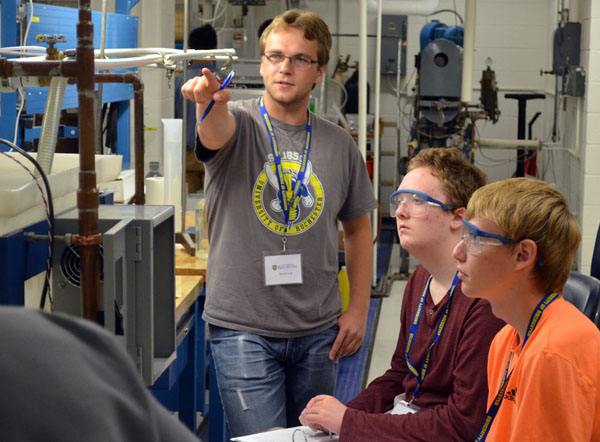
Branden Cole, an undergraduate student in chemical engineering, points out to Sean S. and Adam R. the various valves, flow meters and pipe fitting connections in the U pipe fed by the centrifugal pump. Pressure gauges at the inlet and outlet of the pump and computer-linked pressure sensors at the inlet and end of the pipe enabled the students to gather data on flow rates and drops in pressure at each location, then prepare graphs of flow rate vs. pump power, and pressure difference vs. flow rate.
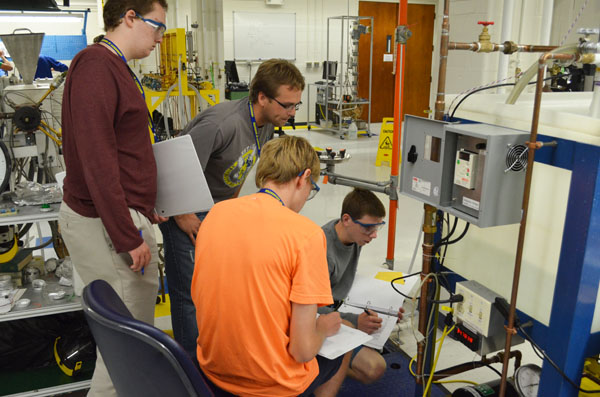
Then its time for the team, including Jon T. at lower right, to start taking readings.
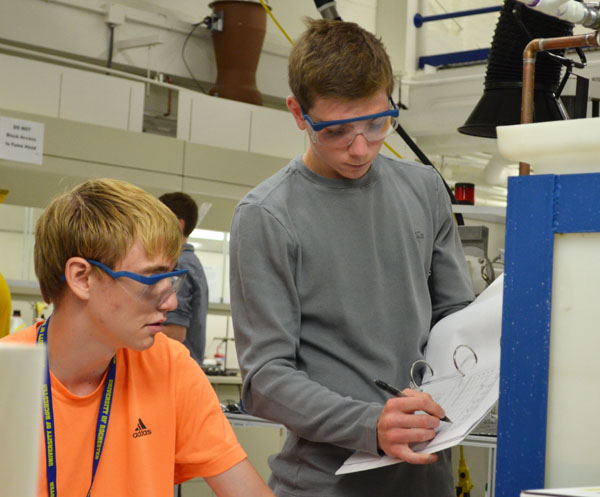
Jonathan T. shares his observations with Adam R.
